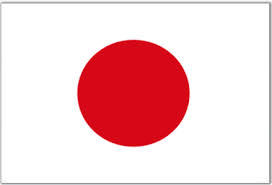
Global macro UBS analyst, Syed Mansoor Mohi-uddin, has a very neat little note out this morning summarising the revolution that has just taken hold of Japanese monetary policy:
The first meeting of the Bank of Japan under Governor Kuroda has surpassed expectations. The central bank has effectively agreed to double its pace of JGB purchases to Y7.5trn a month. This will increase its bond holdings from Y90trn now under its Rinban and Asset Purchase Programmes to Y140trn by the end of 2013 and Y190trn by the end of 2014.
In addition, the BoJ will combine its APP and Rinban operations into a single quantitative easing facility. It will also abandon its ‘bank notes rule’ that restricted its JGB holdings to the size of currency in circulation, and the BoJ will now buy bonds up to a maturity of 40 years. Overall, the BoJ will now target Japan’s monetary base rather than its overnight interest rate.
This major shift – the BoJ will buy around $80bn a month of assets compared to the Federal Reserve’s $85bn a month of easing in an economy less than half the size of America’s – is reminiscent of 1995. Over the last two decades, the Bank of Japan has undertaken various episodes of quantitative easing – including targeting commercial bank reserves from 2001-2006 and starting its Asset Purchase Programme from 2010 – but investors have to go back to 1995 for the last time changes in domestic monetary policy strongly beat expectations.
In that year, the authorities were faced with the collapse of USDJPY from 100 to 79 following the Kobe earthquake. In response, the Bank of Japan – under the instruction of the Finance Ministry – massively increased its ‘Rinban’ purchases of government bonds. That pushed USDJPY back up to 100 in 1995 and thereafter the currency pair trended higher towards 150 by 1998. Clearly, by surprising investors, Japanese policymakers can cause major changes in financial markets. This suggests our end-2013 and end-2014 forecasts of 100 and 110 respectively face strong upside risks now.
Of course, the conditions that led to sustained yen weakness in the late 1990s – after the initial trigger of massive Rinban easing in 1995 – may not be repeated in the next few years. For example, the late 1990s included the ‘yen carry trade’ fuelled by Fed funds hitting 5.50%, the Asian financial crisis, Japan’s own banking crisis and Tokyo prematurely raising sales taxes in 1997. But there is one telling similarity between 1995 and 2013.
In the year of the Kobe earthquake, the BoJ still reported into the Finance Ministry. It was only from 1998 that the central bank gained its operational independence and came under the sway of conservative governors. Kuroda, as the first outsider to run the central bank since then, is returning the institution to its pre-independence era. That means investors should expect more aggressively easing in future if Japan’s inflation numbers still are far away from the BoJ’s new 2% target.

